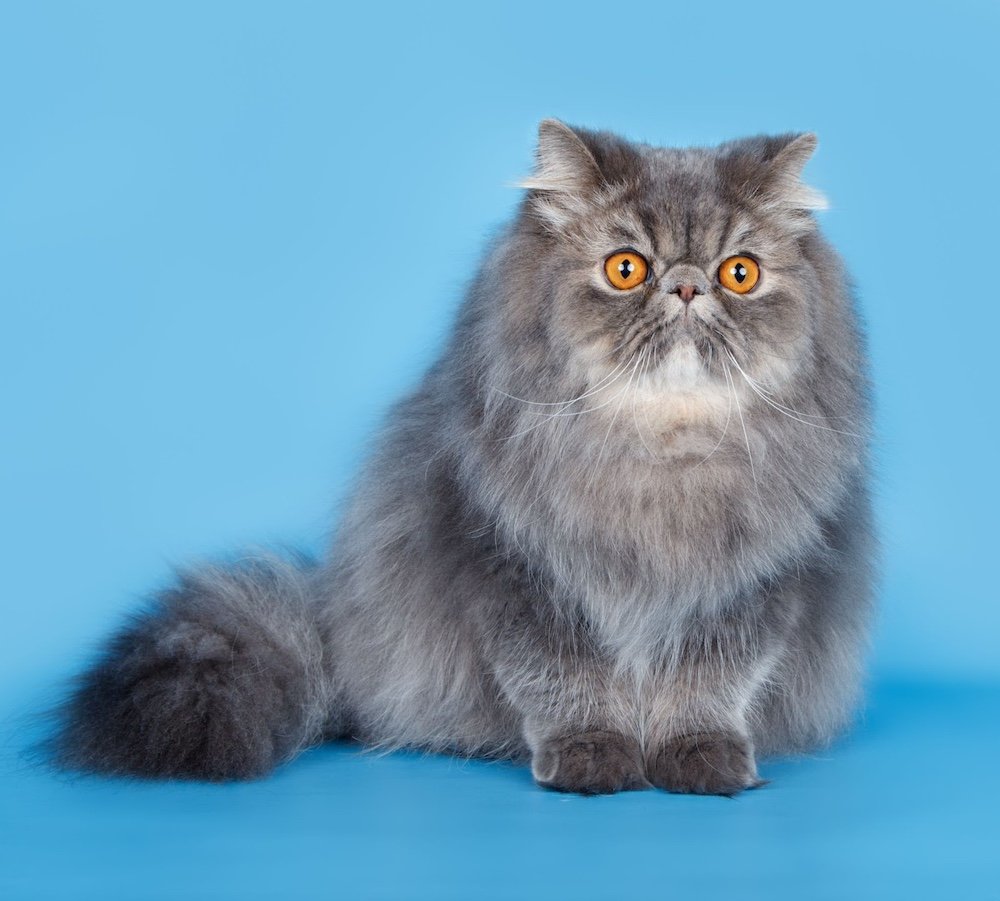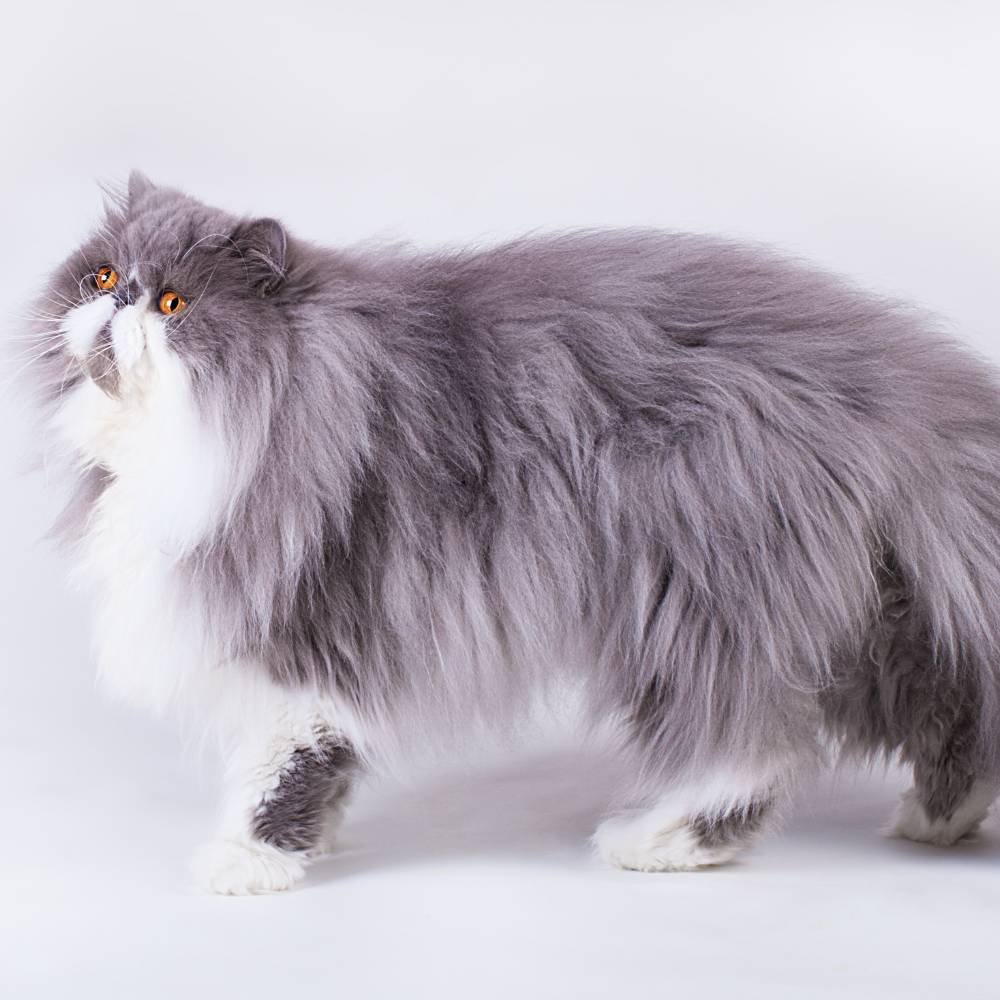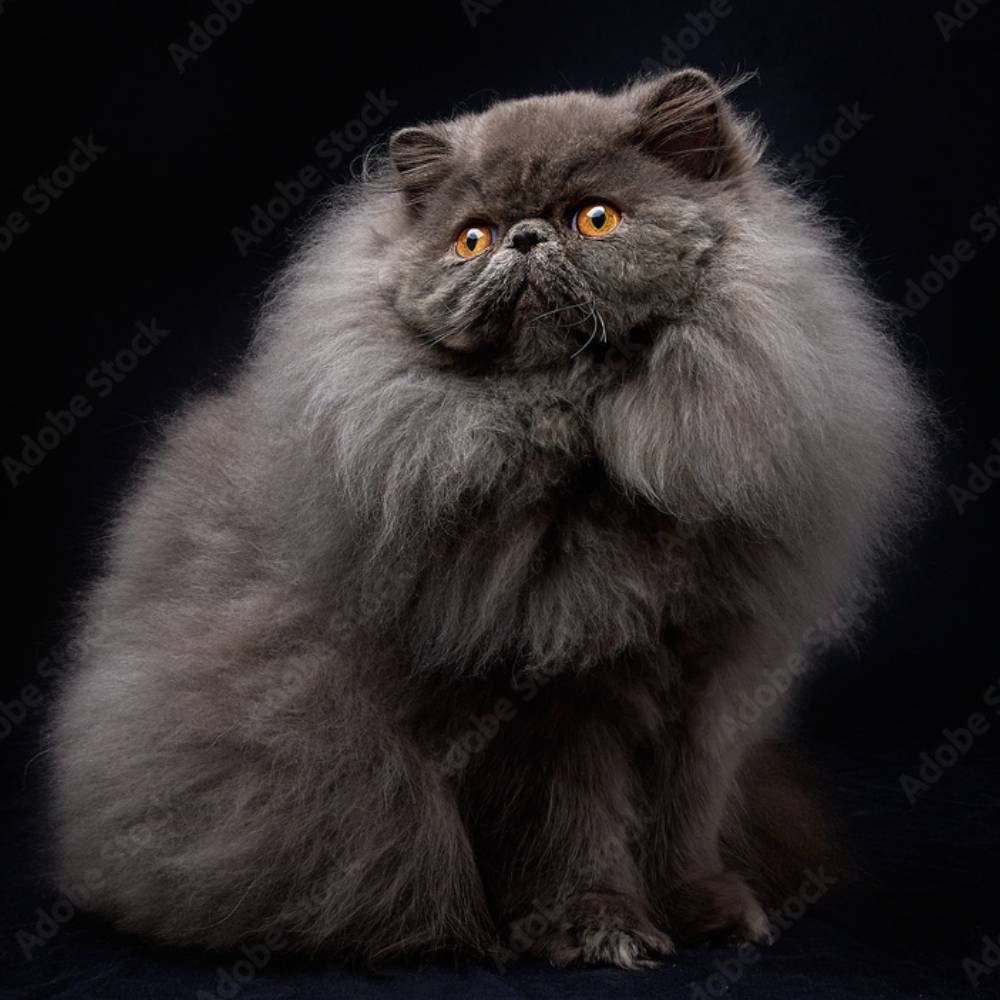
Blue Persian cats have the same personalities, luxurious coats, health issues, and need the same care as other Persian cats. The most significant difference between blue Persian cats and others is that they are the dilute form of black Persian cats. Blue Persian cats are also called grey by most common folks. Blue is what the cat associations, show people, and breeders call these cats.
There are a variety of blue fur types. blue cats are born blue or grey because the black sex-linked gene is affected by the dilute gene, making the cat blue.
Here are some definitions that may be helpful.
Dilute – The dilute gene is a recessive gene. If at the dilute loci, there is a copy of the dilute gene on both copies of the DNA, a black cat becomes blue, a red cat becomes cream, and tortoiseshell becomes a blue cream. If there is only ONE copy of the dilute gene, the color DOES NOT CHANGE. The cat with only one copy is called a dilute carrier. That cat can produce dilute offspring IF bred to another dilute cat or dilute carrier. If a dilute cat is bred to another dilute cat, ALL the offspring will be dilute.
Melanin – a class of insoluble pigments found in all forms of animal life that account for the dark color of skin, hair, fur, scales, feathers, etc.
Eumelanin – a black or brown melanin pigment, responsible for dark coloring of hair, skin, feathers, etc.
Cysteine – a crystalline amino acid, C3H7O2NS, a component of nearly all proteins.
Homozygote – an organism with identical pairs of genes with respect to any given pair of hereditary characters, and therefore breeding true for that character.
Heterozygote – a person, animal, or other organism with a pair of differing alleles, one dominant and one recessive of a particular gene.
Epistatic gene. Epistasis is when one gene is affected by one or more independently inherited genes. In other words, the red Persian cat can also be cream. Another example is having an orange and white bi-color Persian cat. In this instance, the orange gene is modified by the white masking, tabby, or diluted red genes.

How We Get a Blue Persian
The black gene on the X chromosome determines if a cat will be black or any of the variations. The black gene encodes a pigment produced by eumelanin. The allele B codes for black, but b is the code for blue or dilute black.
Since males only have one X chromosome, they can be only orange or black, not both. So, if they carry the B allele, they will be black or a variation.
Females have two X chromosomes, meaning they can carry two alleles of the gene. Dominant homozygotes BB will make them black. However, recessive homozygotes bb will add red to their coat color. Heterozygotes carry one dominant B and one recessive b, which makes them tortoiseshells. Tortoiseshell is a mix of red and black. With the dilute gene added in we get a dilute tortoiseshell. These Persian cats are blue and cream. Cream is a dilute form of red.
Blue Persian Cat Coats
When you think of Blue Persian cats, you probably envision a big puff of steel grey with brilliant green or gold eyes. However, other blue coats may not be what you expect. The blue gene can sometimes have mutations that allow another color gene to show.
Diluted Black Persians
You can get shades of lighter colors in black Persian cats with diluted genes. For example, you can get a blue or grey Persian. On top of that, you can end up with a dilute tortoiseshell if a female has a dominant black and red allele paired with the dilute gene. These cats are grey and cream instead of the standard black and red.

Bi-Color Blue Persians
It takes a black Persian cat with the dilute gene to get a blue Persian. Add the white masking gene to create a blue and white bi-color Persian. Blue Persian cats come in a variety of bicolor patterns. These blue Persian cats are also called piebalds. These cats have any amount of white on them but aren’t entirely blue. The white spots can be limited to a locket on the chest or just some white mittens, up to an almost wholly white cat except for its ears and tail.
There are other bi-color patterns, which I’ve described in detail in our other articles on cat colors. You can find them here.
These patterns are:
- True or Standard Bicolor Pattern
- Mask-&-Mantle Pattern
- Cap-&-Saddle Pattern
- Harlequin Pattern
- Van Pattern
- Mitted

Tortoiseshell Pattern
Cats with the tortoiseshell pattern have a mixture of blue and cream tabby fur. The hues can mix or appear as blue and cream tabby coloring patches. Despite having what seems to be two colors, they aren’t thought of as bicolor cats because they frequently lack white fur. Calico cats are tortoiseshell cats that have some white markings.

Blue Smoke
Smoke is a dominant gene. The smoke gene can’t be carried in the DNA hidden from sight unless the cat has a copy of the white gene. One copy of the smoke gene will turn a blue Persian into blue smoke. Persians with two copies of the smoke gene will always have smoke kittens. There are two other versions of the smoke gene. This gene can be confusing when looking at these cats. Smoke Persians have a mostly colored hair shaft with a white undercoat. Those with hair shafts that are half-colored and half-white are called Shaded. Some of these Persians have mostly white hair shafts with colored tips. These cats are called shells. Shell Persians are very rare.
Silver Persian
Silver Persian cats can have black agouti hairs or blue agouti hairs to finish their silver look. These cats are rare and, even with careful breeding, are hard to come by. I’ve done an article on how this rare color occurs.
Tabby Patterns
Blue Persians can come in tabby patterns such as Classic, mackerel, patched, spotted, and ticked.
Conclusion
There you have it—some interesting facts about Blue Persian cats. While the blue Persian cat is just like any other color of Persian cat, they have the dilute gene that makes their black coat blue or grey. We hope you learned something about blue Persian cats and enjoyed this article. Did this help you understand why your blue Persian is the color they are or why they may have the pattern or markings they do? Now you have an answer. If you liked our article, please leave any questions or comments below.